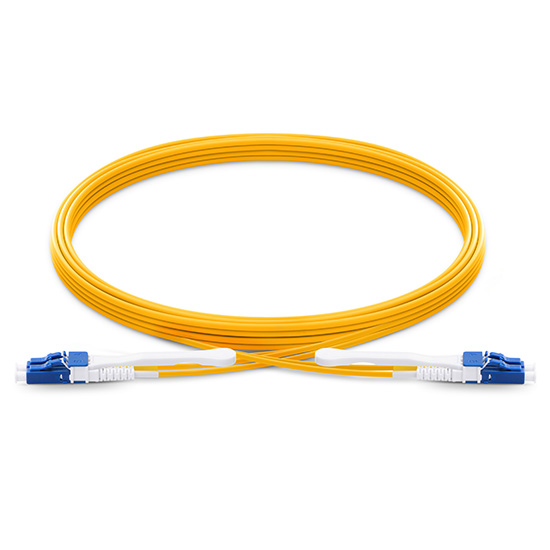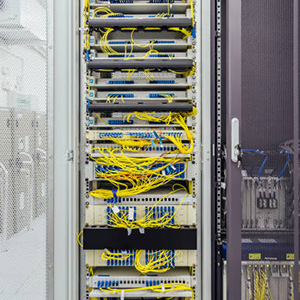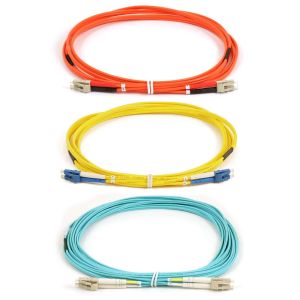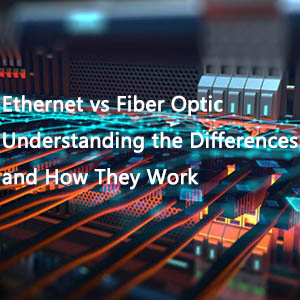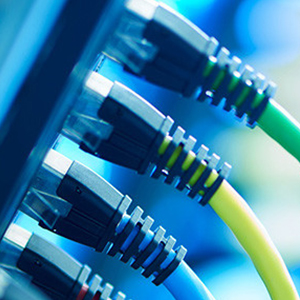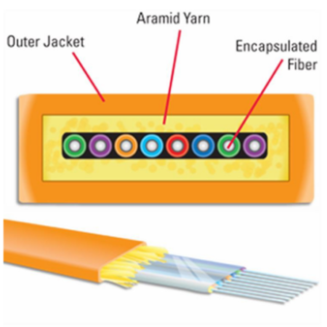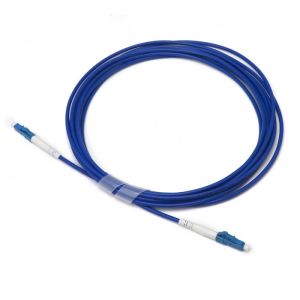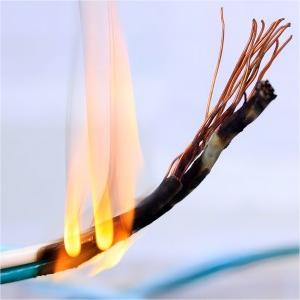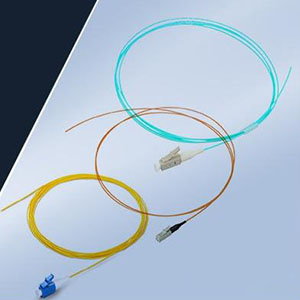Optical fiber cable, also known as an optical cord, is a fundamental component in fiber optic networks. There are various types of optical cables, including single-mode fiber optic cables, multimode fiber optic cables, simplex fiber optic cables, and duplex fiber optic cables. Each type of fiber optic patch cable serves different applications. This paper will focus on simplex and duplex fiber patch cords. By comparing simplex and duplex fiber optic cables, Fiber-Life will provide some tips for selecting the appropriate type for your needs.
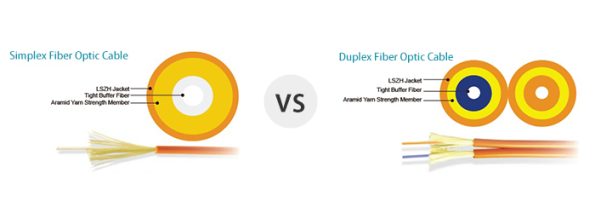
Simplex VS. Duplex Fiber Optic Cables
Simplex VS. Duplex
Before discussing simplex vs. duplex fiber optic cables, the first thing is to get a clear and deep understanding of simplex vs. duplex. Simplex and duplex are different kinds of communication channels in telecommunications and computer networking, which provide pathways to convey information. According to the ITU-T definition, a simplex circuit is one where signals can flow in only one direction at a time. One end is the transmitter, while the other is the receiver and that is not reversible. On the other hand, the full duplex system uses two fibers to communicate. This allows one fiber to transmit from point A to point B while the other fiber transmits from B to A. Therefore, both ends of a full-duplex system have both transmitters and receivers. Unlike simplex, duplex can be divided into half duplex and full duplex. Half duplex means a communication channel that data can be transmitted in both directions on a signal carrier but not simultaneously. One end is the transmitter, while the other end is the receiver and may be reversible (this is the opposite of simplex). This makes it similar to a two-way radio. In addition, full duplex is two-way communication achieved over a physical link that has the ability to communicate in both directions simultaneously.
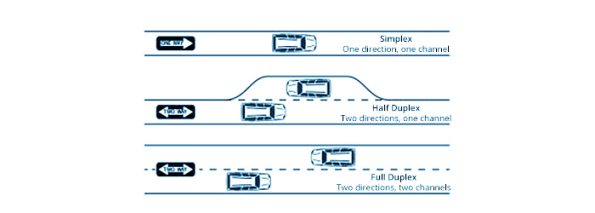
Simplex VS. Duplex
Simplex Fiber Optic Cables
A simplex fiber optic cable consists of one single strand of glass of plastic fiber and one single outer jacket. Simplex fiber is most often used for applications that only require one-way data transfer. Digital data readouts, interstate highway sensor relays, and automated speed and boundary sensors (for sports application) are all great uses of simplex fiber optic cable. In simplex fiber optic network, there are available in simplex single mode and simplex multimode fiber optic cable (eg: 62.5/125 OM1 fiber and 50/125 OM2 fiber). Single mode simplex fiber patch cable is a great option for setting up a cable network that will require data to travel in one direction over long distances. Since this simplex optical fiber cable only carries one ray of light at a time, it’s better for long-distance transmissions. The simplex multimode fiber has a larger diameter core that effectively allows multiple modes of light to propagate. The number of light reflection is created due to a larger diameter. The core of a single mode simplex optic patch cord is 8 to 10 microns, while a multimode simplex optic patch cord is either 50 or 62.5 microns. More data passes through the multimode fiber at a given point in time. The quality of the signal is reduced over long distances due to high dispersion and attenuation rate with this type of fiber. Multimode fiber is used for short distance data transmission purposes.
Duplex Fiber Optic Cables
A duplex fiber optic cable consists of two strand fibers of glass or plastic, and it can be regarded as two simplex cables. This duplex fiber cable is carefully structured in a zip-cord arrangement, which is most often used for duplex communication between devices where require simultaneous, bi-directional data transfer. (One fiber transmits data one direction and another fiber transmits data in the opposite direction.) Larger workstations, fiber switches and servers, fiber modems, and similar hardware tends to require duplex fiber cable. Duplex fiber is also available in single mode duplex fiber optic cable and multimode duplex fiber optic cable. Half duplex and full duplex are two types of fiber optic duplex cables that are used in different data transmission applications.
Half Duplex Fiber Optic Cables
Half duplex fiber optic cable is capable of sending the signal in both directions but in only one direction at a time. Some transmission network uses half duplex cables but it is necessary to specify this requirement for all the nodes in the network. For instance, half duplex fiber optic can be used in police car radio phones to allow only one person to talk at each time.
Full Duplex Fiber Optic Cables
In the full duplex fiber optic cables, the data is transferred in two different directions simultaneously on a single carrier at the same time. An example is a telephone IP service where people at both ends of a call can speak and be heard by each other at the same time because there are two communication paths between them, thus using the full duplex mode can increase the efficiency of communication.
Simplex VS. Duplex Fiber Optic Cables
As mentioned above, a simplex fiber optic cable has only one tight-buffered fiber inside cable jacket. The protective jacket enables the cable to be connected and crimped to a mechanical connector. However, duplex fiber optic patch cord can be regarded as two simplex cables having their jackets conjoined by a strip of jacket material, some duplex fiber optic jumper cables are with clips on the two fiber optic connectors at each side of the cable to combine the two connectors together. For the sake of using less source material, simplex fiber optic cable is cheaper than duplex optical cable. Furthermore, simplex optical fiber cable uses only single one strand of fiber in one-way transmission mode, while duplex fiber cable uses a pair of fiber in bi-directional transmission mode.
How to Choose Simplex and Duplex Fiber Optic Cables?
Single-mode and multimode simplex optic patch cords are ideal for applications requiring one-way data transfer. They are commonly used to establish connectivity between two BiDi transceivers, which are often designed with LC simplex single-mode fiber to match the optical interface of BiDi SFP/SFP+ optics and their operating wavelengths. Additionally, simplex BiDi WDM Mux/DeMux devices are designed for single-strand fiber transmission, necessitating the use of simplex fiber cables to combine and separate wavelengths. Besides these components, there are numerous other elements associated with simplex fiber solutions, such as simplex PLC (Planar Lightwave Circuit) splitters, OADMs (Optical Add Drop Multiplexers), and other simplex fiber products.
On the other hand, duplex fiber optic cables are typically used with standard optical transceivers such as SFP, 10G SFP+, 40G QSFP+, and 100G QSFP28. Only LC duplex fiber cables are suitable for long-distance applications like 40G-LR4 and 100G-LR4. When the distance between two devices is extensive, duplex fiber is also used as an interconnector or cross-connector between fiber optic transceivers and MPO/MTP cassettes.


